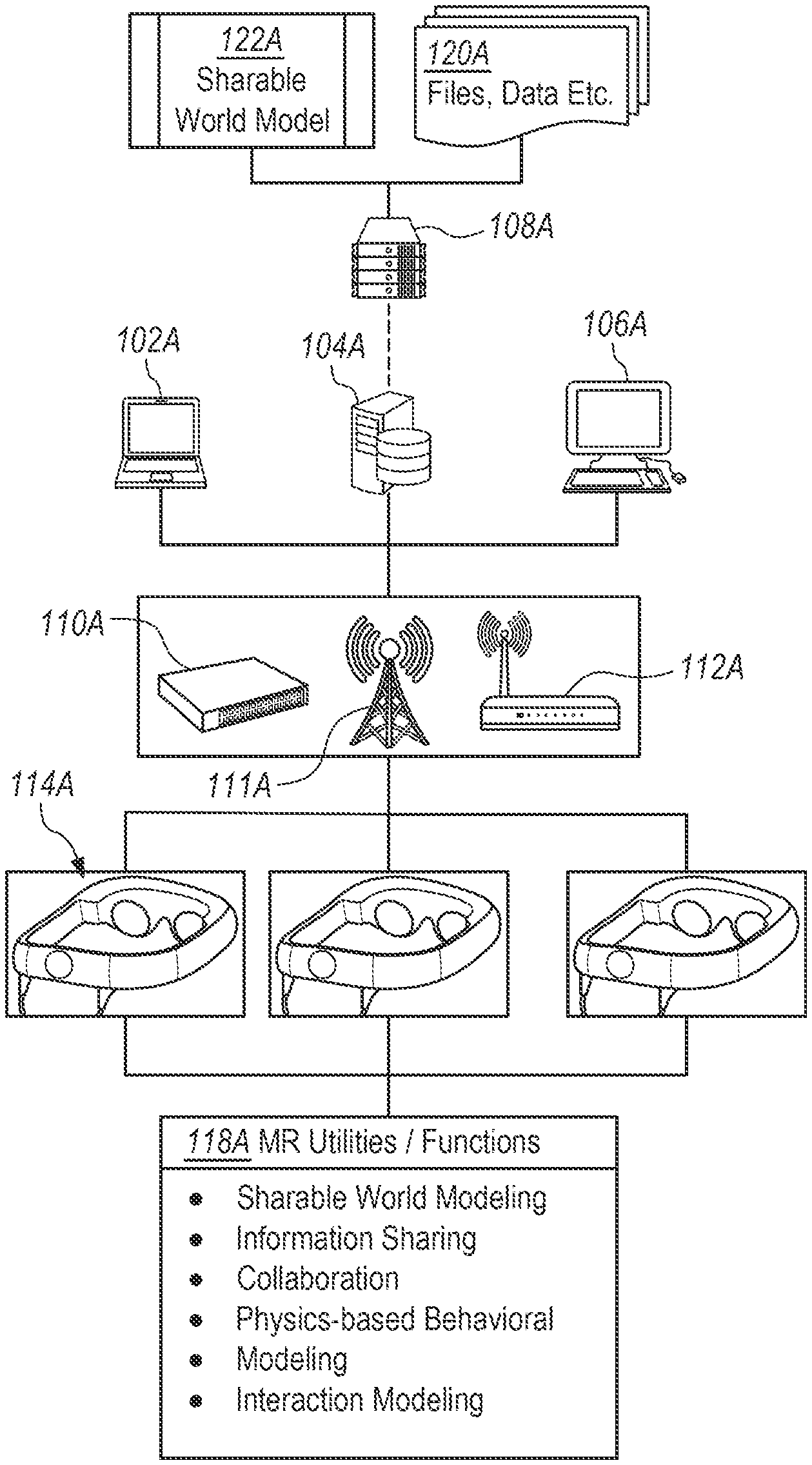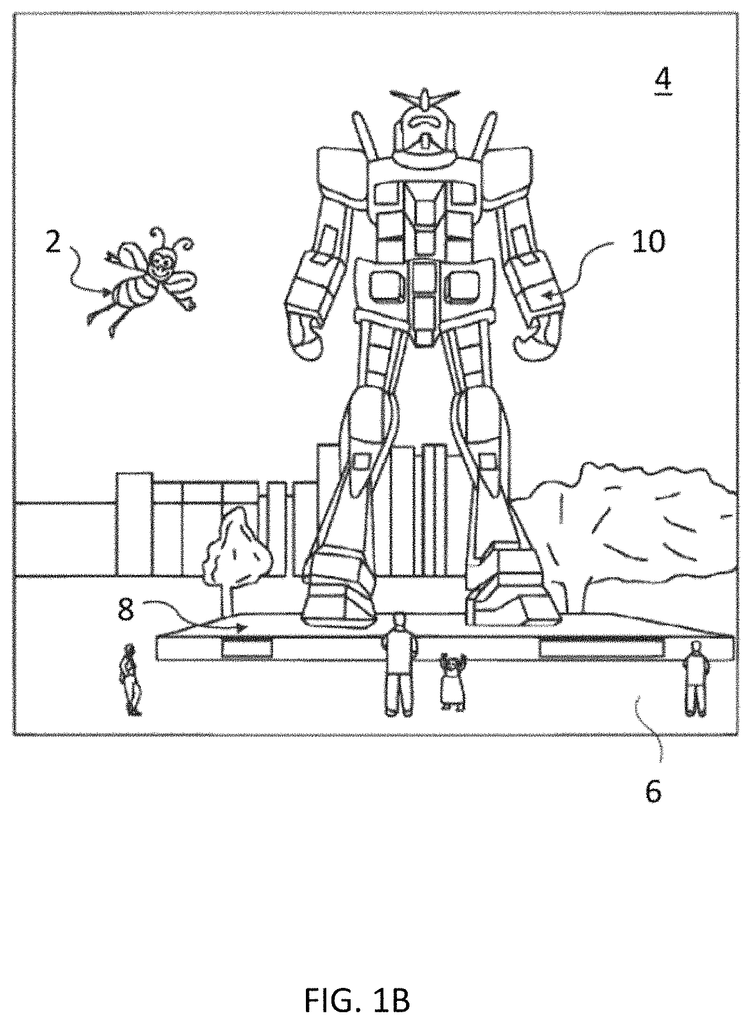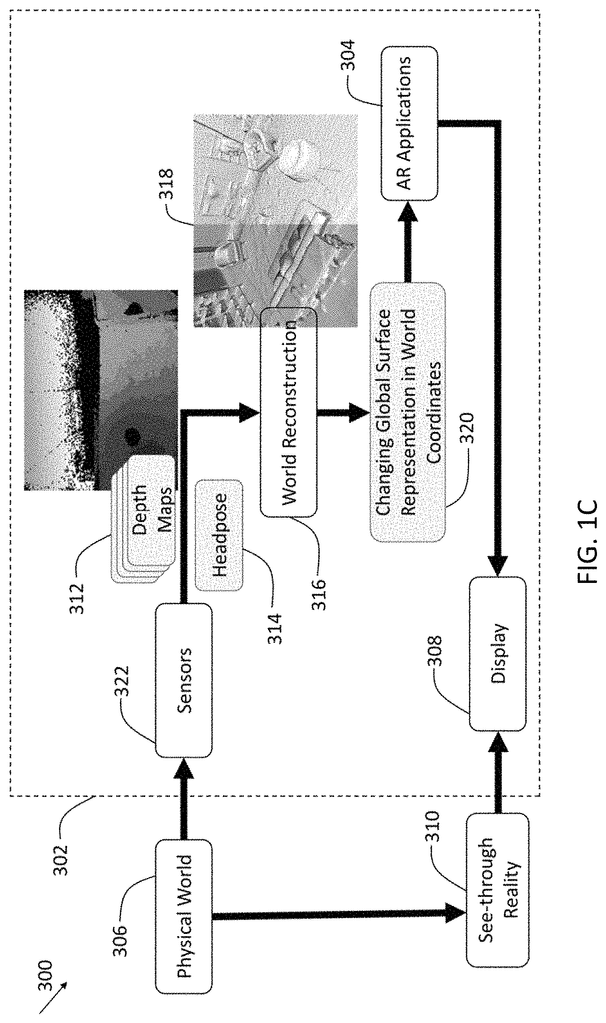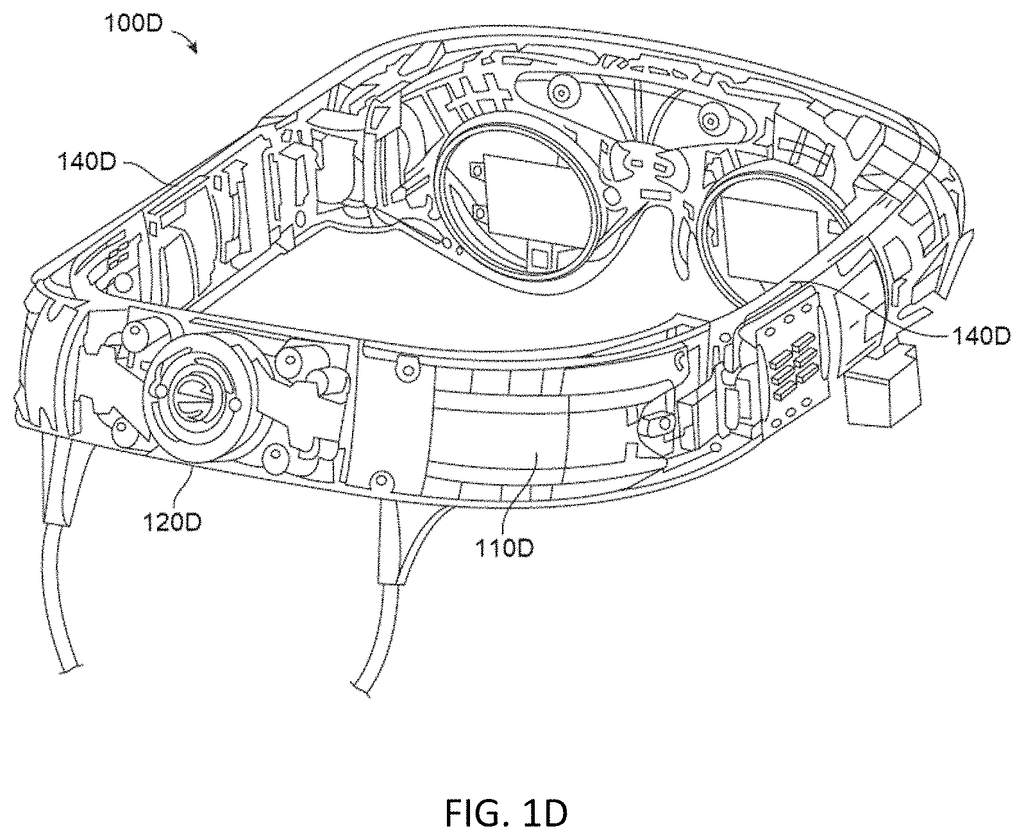Invented by Robert David Berkebile, Magic Leap Inc
Virtual reality (VR) and augmented reality (AR) are transforming the way we interact with digital content and the physical world. VR creates a completely immersive experience by simulating a virtual environment, while AR overlays digital information onto the real world, enhancing our perception and interaction with it.
One of the key drivers of the market growth is the increasing demand for VR and AR in the gaming and entertainment industry. The ability to transport users into virtual worlds and provide interactive experiences has revolutionized the gaming industry. From virtual reality headsets to augmented reality mobile games, the market is flooded with innovative products and applications.
However, the applications of VR and AR extend far beyond gaming. In the healthcare industry, these technologies are being used for medical training, patient rehabilitation, and even surgical procedures. VR allows medical professionals to practice complex surgeries in a safe and controlled environment, reducing the risk to patients. AR, on the other hand, can provide real-time information during surgeries, improving accuracy and efficiency.
The education sector is also embracing VR and AR as valuable tools for immersive learning experiences. Students can explore historical sites, travel to distant planets, or dissect virtual organisms, all from the comfort of their classrooms. These technologies enhance engagement and retention, making learning more interactive and enjoyable.
The market for VR and AR systems and methods is not limited to entertainment and education. Industries such as architecture, real estate, and manufacturing are utilizing these technologies for design visualization, virtual walkthroughs, and product prototyping. VR and AR enable stakeholders to visualize and make informed decisions before investing in physical prototypes or construction.
The COVID-19 pandemic has further accelerated the adoption of VR and AR technologies. With travel restrictions and social distancing measures in place, businesses have turned to virtual meetings, conferences, and trade shows. VR and AR provide a more immersive and engaging alternative to traditional video conferencing, allowing participants to interact in a virtual environment.
As the market for VR and AR continues to grow, so does the demand for innovative systems and methods. Companies are investing heavily in research and development to improve the hardware, software, and content creation tools. Advancements in display technology, tracking systems, and haptic feedback are driving the market forward, making VR and AR experiences more realistic and immersive.
In conclusion, the market for systems and methods for virtual and augmented reality is experiencing rapid growth across various industries. The demand for immersive experiences, improved training and education, and enhanced visualization is driving the adoption of VR and AR technologies. As technology continues to advance, we can expect to see even more innovative applications and solutions in the future.
The Magic Leap Inc invention works as follows
Disclosed are mixed-reality system methods, systems and computer programs. These methods or system determine a three dimensional model of at least a portion a physical environment where a user is situated; and present a mixed reality representation by a spatial computer system to the user. These methods or systems also determine a model of a first item in the mixed reality representation, and update the mixed reality representation by the spatial computing system to reflect an interaction with the first object.
Background for Systems and Methods for Virtual and Augmented Reality
Modern computing and display technology has facilitated the development systems for so-called “virtual reality” (VR), ?augmented reality? (AR) experiences, ?mixed reality? MR experiences and/or extended realities (XR). and/or ?MR? (and/or?MR? In a VR scenario, digital images or virtual images are presented without regard to the actual visual input of the world. However, in an AR or MR situation, digital image or virtual information is displayed as an augmentation of visualization of the world around the user, so that the virtual image or digital image appears to be a real part of it. MR can integrate virtual content contextually, whereas AR cannot.
Mixed reality technology has been used in a variety of applications, including gaming, military training and simulation-based training. To productivity, content creation and management. Mixed reality systems can create virtual objects which appear real or are perceived to be so. When applied to Internet technologies, such capabilities may expand and enhance Internet capabilities as well as user experiences, so that web resources are no longer restricted by the two-dimensional, planar representation of web pages.
The advent of MR devices and systems, and their development, may revolutionize information technology. MR devices and systems could expand applications beyond the conventional ones such as Web browsing or gaming. By hosting productivity software on MR devices or systems, providing productivity software as microservices or services through, for instance, a cloud environment, or a combination, local hosted productivity software and cloud-based services, can revolutionize the way corporate work culture is done, office layout, how co-workers interact and perform their daily tasks, etc. A business entity could adopt MR devices in place of desktop and/or laptop computer. “Despite the many benefits, it is difficult to manage a fleet MR devices or systems for enterprise applications.
There is a need to develop methods, systems and computer programs for the management of mixed reality systems.
In one or more embodiments, “Disclosed” are method(s), systems and articles of manufacture for managing mixed reality system. In some embodiments, a method is disclosed for managing mixed reality systems.
In some embodiments, the techniques present a mixed-reality model to a user by using a spatial computing device. These methods or systems also determine a model of a first item in the mixed reality representation, and update the mixed reality representation by the spatial computing system to reflect an interaction with the first object.
In some embodiments, a second object in at least a portion of the mixed-reality environment or the physical environment may be recognized. In some embodiments, at least a portion of the environment can be broken down into voxels.
At least one voxel from the one or multiple sets of voxels can be mesh with two-dimensional or three-dimensional grid; and at least the portion can be represented using the two-dimensional or three-dimensional grid.” In certain embodiments immediately preceding, a model of a physical item may replace a physical one of the physical objects.
In some embodiments, a one or more objects recognizers can be identified. An object recognizer from the one or multiple object recognizers is pre-configured for a particular object or type of object. In some embodiments, one or two second objects can be recognized by applying one or multiple object recognizers.
In other embodiments, one or two second objects can be recognized by performing a multilevel recognition process on the one object, wherein the process includes a first stage of applying a plurality of first object recognizers followed by a second stage of applying a plurality of second object recognizers. The first level must be performed before the second.
In some embodiments immediately preceding, at least one object can be removed from one or multiple second objects by applying one or two first object recognizers. A second object within the one-or-more second objects can be recognized by applying one or two second object recognizers on one or several remaining second items, where the remaining second items do not contain the at least second object.
In some embodiments, the type of second object may influence the identification of one or multiple properties for the object. The one or several properties can be associated with the object.
In some embodiments, an interaction is a user-to object interaction between a user and the object. The object can be a virtual or physical object. Update the mixed reality representation to the updated representation by performing at least one of the following: performing a behavior-based modeling for at the least the object model, performing an object interaction modeling both for the interaction and the object model or performing soft locking on the object for the object.
Some embodiments relate to a hardware system which can be used to execute any of the disclosed methods, processes or sub-processes. In some embodiments, the hardware system can include or be a mixed-reality system with at least one core or processor, which executes multiple threads to perform one or more of the processes, methods or sub-processes described herein. The hardware system can also include non-transitory, machine-readable media or devices for storing data or information. In the System Architecture Overview, you can find some exemplary components or modules of the hardware system.
Some embodiments relate to an article of manufacture which includes a nontransitory machine accessible storage medium that has stored thereon a series of instructions, which when executed by a processor or a processor core causes the processor or processor core perform any of methods, processes or subprocesses described herein. You can also find some exemplary forms of non-transitory, machine-readable storage mediums in the System Architecture Overview section.
In order to give a complete understanding of the disclosed embodiments, specific details will be provided in the following description. One skilled in the art will however recognize that embodiments can be practiced with or without these specific details or other components, methods, materials, etc. Other instances, well-known computer systems, servers computers, and/or communication networks have been avoided to avoid obscuring descriptions.
It should be noted that unless the context dictates otherwise, the word “comprise” will appear throughout the following specification and claims. “It shall be noted that, unless the context requires otherwise, throughout the specification and claims which follow, the word?comprise? The words ‘comprising’ and ‘comprises? “Including, but not limited to” is to be understood in a broad, inclusive way.
It should be noted that throughout this specification, the term “one embodiment” is used. or ?an embodiment? At least one embodiment includes a certain feature, structure, or characteristic that is described in relation to the embodiment. The phrase ‘in one embodiment’ is used to indicate this. The phrases?in one embodiment? In this specification, the word “embodiment” is used in many places. This does not mean that all of them refer to the same embodiment. In addition, features, structures or characteristics can be combined in any way suitable in one or several embodiments. In addition, in the specification and appended claims the singular forms are?a?,? ?an,? The words?an?,? Plural referents are included unless it is clearly stated otherwise. Also, it is important to note that the word?or? The term?or? “Unless the content clearly dictates that it is otherwise
Various embodiments are now described in detail, with reference to the illustrations. These drawings serve as examples to help those who know the art implement the invention. The figures and examples are not intended to limit the scope or application of the invention. When certain elements of the invention can be implemented partially or completely using known components, methods, or processes, only those portions that are essential to understanding the invention will be described. The management of virtual reality (?VR?) is addressed in various embodiments. Virtual reality (?VR? Mixed reality (?MR?) Mixed reality (?MR? MR systems or mixed-reality systems (also collectively referred to as a?XR system? Mixed-Reality System (MR system) in different embodiments.
FIG. The block diagram 1A is a high level diagram of a simplified diagram of mixed-reality systems or devices that perform one or multiple processes described in this document. The one or multiple embodiments described below provide a set of mixed-reality utilities or functions 118A that facilitate the performance of various tasks pertaining to MR devices and systems.
The suite of MR functions and/or utilities 118A can be installed completely on an MR Device 114A. This could also include a server 104A or a laptop computer 102A. In some embodiments. In other embodiments, a MR function or utility in 118A can be distributed between MR device 114A (e.g. 102A 104A and/or 106A etc.). The one or more computing system (e.g. 102A 104A 106A etc.) The distributed storage or storage system 108A may store, for example: shareable world models, object models, environmental models, one of more parametric models for a parameterized object, object recognizers and code modules. 122A, and/or multiple files, libraries classes, data etc. “120A is designed to make it easier for MR utilities or functions to be performed in suite 118A.
Click here to view the patent on Google Patents.





